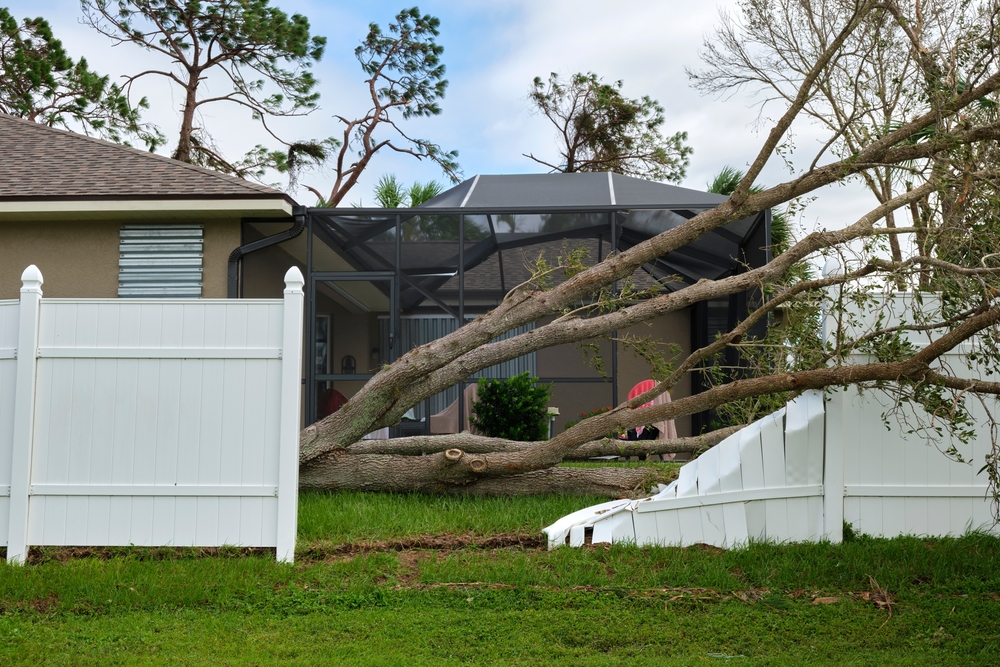So, you’ve got an old tree in your yard that’s seen better days, huh? Maybe it’s a safety hazard or just doesn’t fit into your landscaping plans. Either way, you’re probably wondering, “how much is this gonna cost me?”
Well, there’s no one-size-fits-all answer. It’s like asking the price of a car without specifying the make, model, or condition. Several factors can influence the cost of tree removal, from the tree’s size and location to the complexity of the job.
Stay tuned, and we’ll break down these factors for you. By the end, you’ll have a better idea of what you might be looking at in terms of cost. Let’s dive in, shall we?
Tree Removal Costs on Average
Let’s dive right into the numbers. The average cost of tree removal, according to a study conducted by Angi.com, is about $750. Yet, your expenses could fall anywhere in a range starting from $200 and going up to a whopping $2,000. Just like picking out a new pair of sneakers, the cost of tree removal isn’t one-size-fits-all. You see, there’s a mix of factors that can sway the price you’ll end up paying.
What kind of tree are we dealing with? Knowing the size and species of the tree plays a role in how much you’ll be forking out. Is it a towering oak or a slightly more modest pine? Bigger trees mean bigger costs – they require more labor, more time and sometimes even special equipment to safely take them down.
Your tree’s location also tweaks the final price tag. Are the branches brushing up against power lines, or is it nested neatly away in your backyard? If it’s more of a complex job, expect the cost to rise.
So when you’re budgeting for your tree removal, bear in mind that the size, species, and location of your tree all play their part in the final quote. It’s a little more complicated than just pointing at a tree and slapping a price tag on it. But hey, you’ve got this. After all, being a homeowner means taking it all in stride.
One more thing to keep in mind, it’s possible that your homeowner’s insurance could cover the tree removal costs, but only in certain scenarios such as a storm or incident that resulted in a fallen tree or home damage.
Tree Removal Cost Factors
Now that you’re aware that different variables determine tree removal costs, let’s hammer down into detail. You’ll find that size, surroundings, type, health, and required clean-up all sneak up into the final bill.
Tree Size
Let’s talk the size of the tree first. Common sense shows that bigger trees will cost more to remove.
| Tree Size | Average Cost |
|---|---|
| Small | $150 – $400 |
| Medium | $450 – $700 |
| Large | $900 – $1200 |
| Extra Large | $1300 – $2000 |
Remember that these ranges are just averages. Prices can be influenced by other factors that we’ll discuss further.
Tree Surroundings
Where your tree sits on your property plays a huge role. For instance, trees closer to buildings, power lines, or other structures may require extra caution — and extra dollars. If the tree is well away from any structures or utilities, it won’t be as tricky or risky to remove.
Tree Type
Species of tree can also influence the cost of removal. Some tree types, like Oak or Pine, are heftier and require more effort to remove. So naturally, these types will cost you more.
Tree Health
Next, consider the tree’s health. Dead or dying trees could be unstable, making them more dangerous to remove. On the other side, a healthy tree may be more resilient and complicated, possibly adding to the cost.
Cleanup and Follow-Up
After a tree’s down, the job’s not complete. The site needs to be cleared of debris, and sometimes folks want the stump removed as well — both tasks that can add to the total. Remember, your quote may or may not include these follow-up tasks, so it’s something to keep in mind when looking at the numbers.
By understanding these factors, you can take a more informed approach to budgeting for a tree removal job. Remember, no two trees are the same, and neither are the costs to remove them.
What if I Do It Myself?
You might be thinking it’d be cheaper to take on the task yourself. But remember, there’s a lot to consider. The size of the tree, its location, and health all play a part. Plus, you’ve got cleanup to think about. It’s not just about chopping down a tree. You’ve got to deal with the aftermath too.
So, before you roll up your sleeves and grab that chainsaw, weigh the costs. Sure, you might save some bucks up front. But is it worth the risk and the hassle? Sometimes, it’s just better to leave it to the pros. They’ve got the experience and the right tools to get the job done safely and efficiently.
Don’t forget, you’re not just paying for a tree to be removed. You’re investing in peace of mind. And that, my friend, is priceless.


